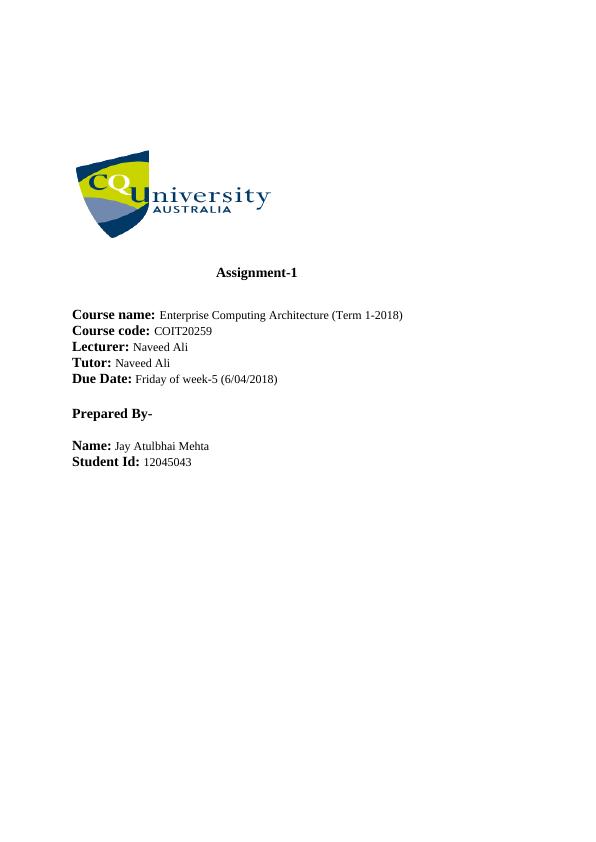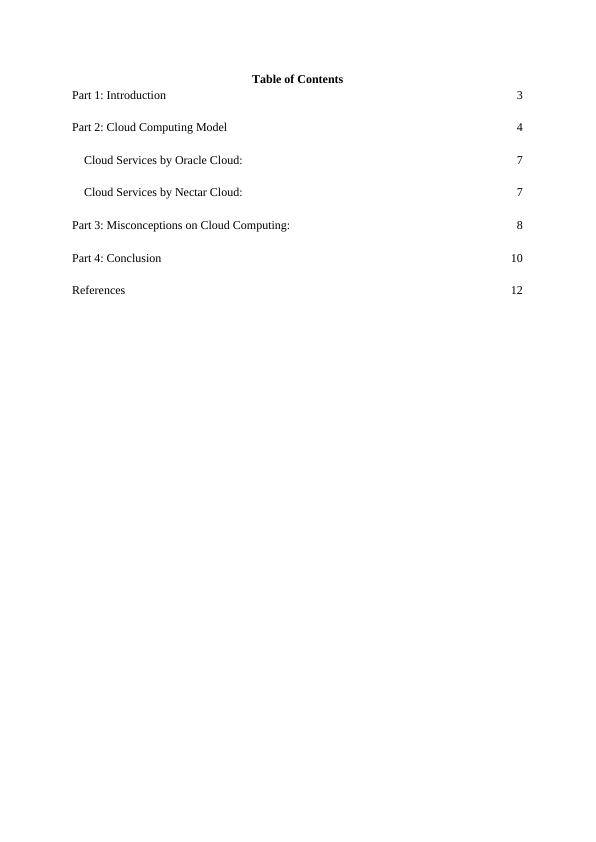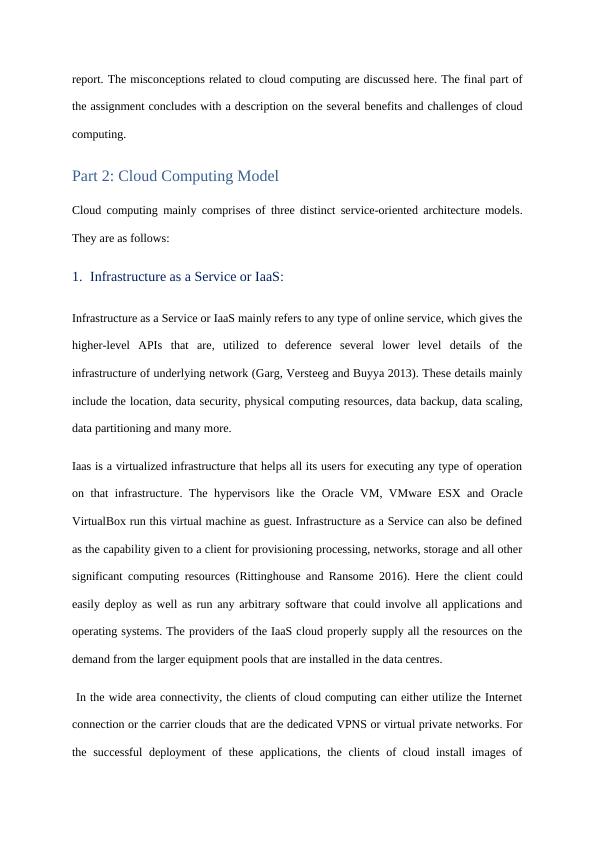Cloud Computing: Models, Misconceptions and Services by Oracle and Nectar Cloud
13 Pages3388 Words278 Views
Added on 2023-06-14
About This Document
This report discusses the concept of cloud computing, its three service-oriented architecture models, and misconceptions about it. It also covers the cloud services provided by Oracle and Nectar Cloud. The report concludes with the benefits of cloud computing. COIT20259 Enterprise Computing Architecture (Term 1-2018) assignment by Jay Atulbhai Mehta.
Cloud Computing: Models, Misconceptions and Services by Oracle and Nectar Cloud
Added on 2023-06-14
ShareRelated Documents
End of preview
Want to access all the pages? Upload your documents or become a member.
Cloud Computing: Models, Services, Misconceptions and Examples
|14
|3734
|270
Part 1: Introduction to Cloud Computing 3 Part 2: Cloud Computing Model 4 Part 1: Infrastructure as a Service (IaaS) 4 Part 2: Platform as a Service (PaaS) 4 Part 2: Cloud Computing Model 4 Part 2: Cl
|13
|3202
|389
Cloud Computing Approach PDF
|16
|2384
|33
Cloud Computing: Models, Misconceptions and Benefits
|14
|3620
|446
Cloud Computing: History, Service Models, Architecture, Security, and Limitations
|15
|1030
|418
Cloud Computing: IAAS, SaaS, PaaS Models and AWS Implementation
|9
|2112
|225




